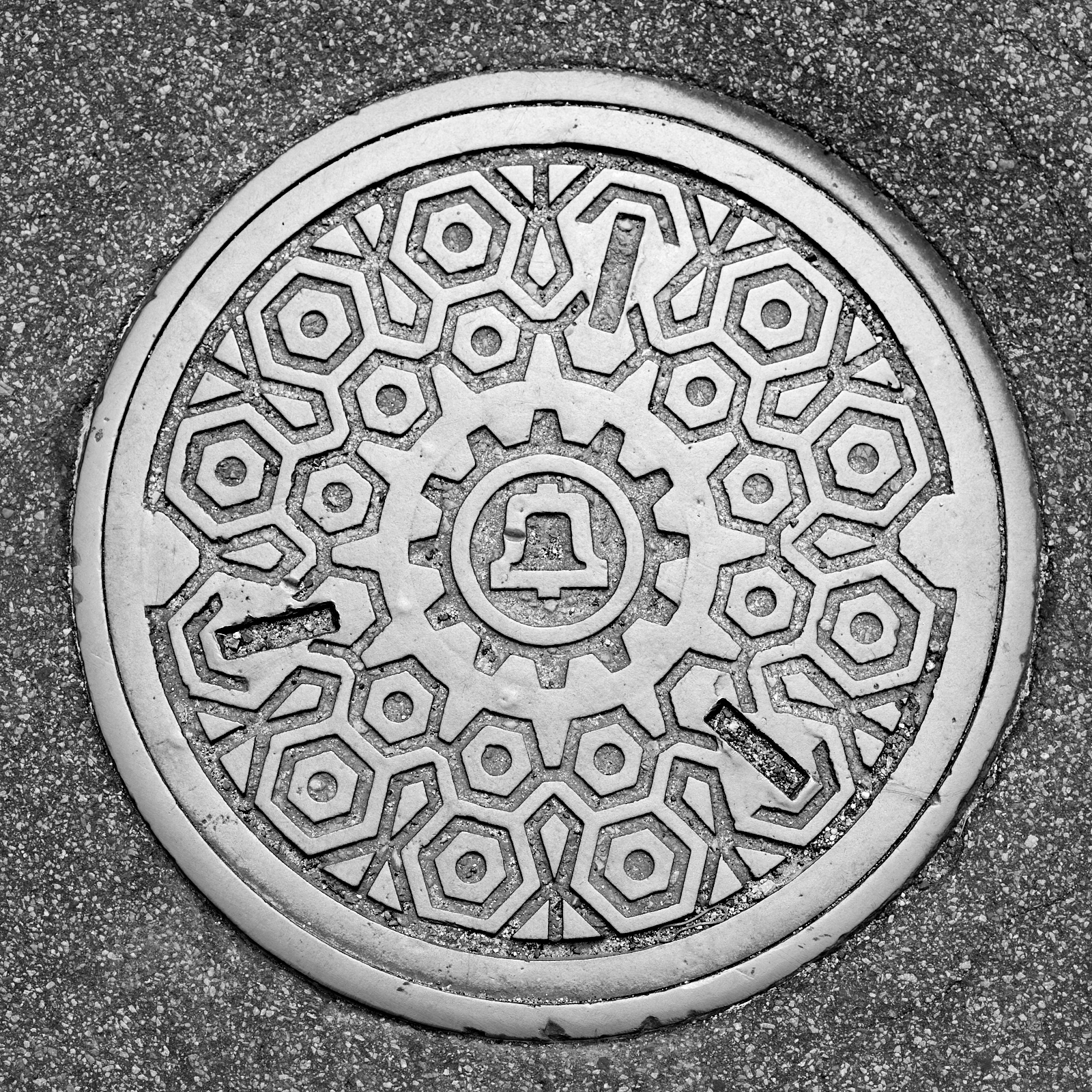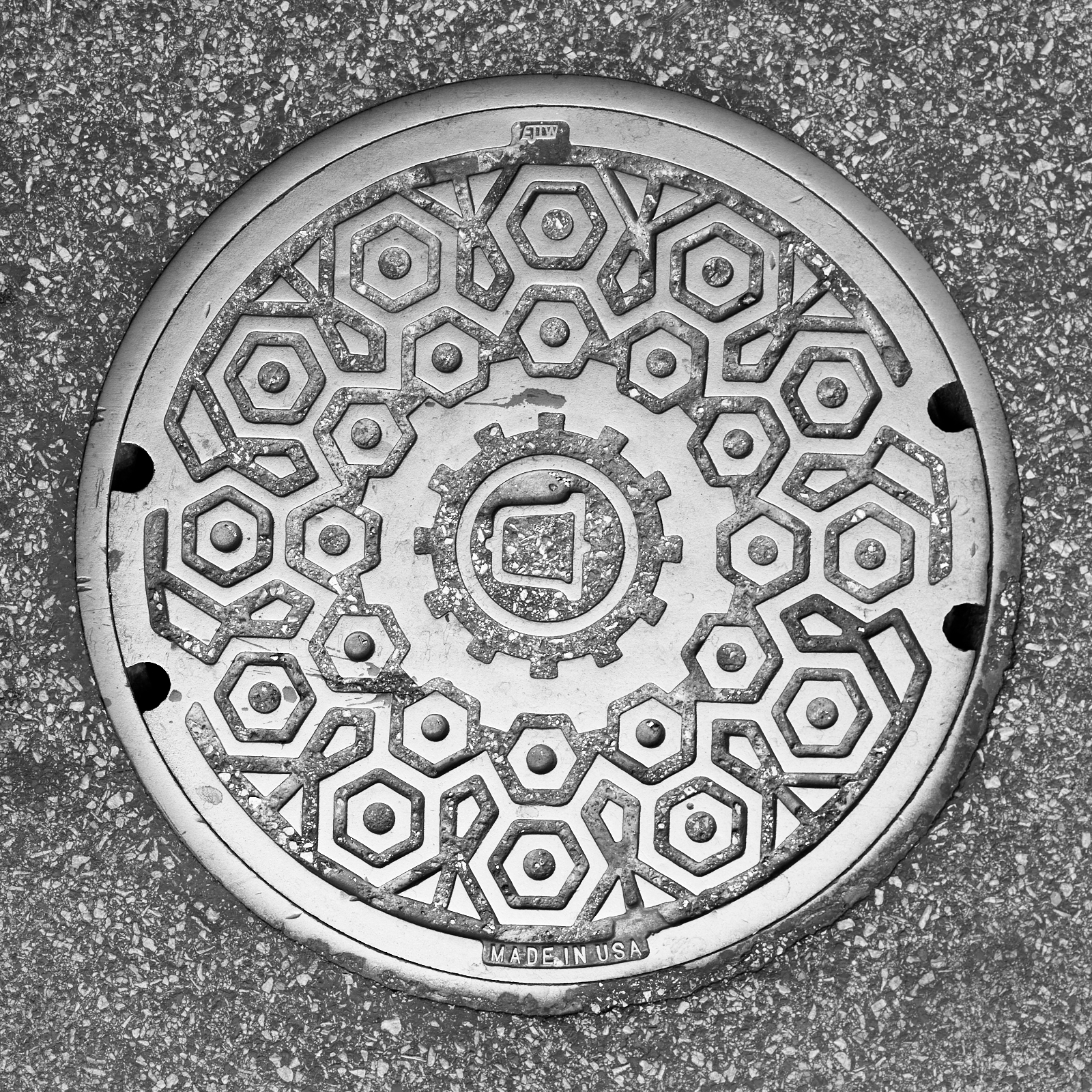I find something compelling about Bernd and Hilla Becher’s book, Typologies of Industrial Buildings. Juxtaposing numerous individual examples of industrial structures highlights their similarities and their differences. It also draws attention to often overlooked or ignored architecture, encouraging us to see design and aesthetic choices, to view these utilitarian structures as art. While each of their photographs, taken alone, is interesting, when taken together they are a sort of conceptual art, as well as a study in form.

The Bechers’ work lies behind my interest in otherwise overlooked infrastructure. Windmills, manhole covers, utility poles, high tension towers, bridge supports. These are all opportunities to focus on the mundane in an effort to find the interesting.

Manhole covers. Lots of people have found manhole covers interesting. Some people use manhole covers to make great prints. Other people have spent time photographing them. But what happens when we consider them in large numbers? Can we produce a typology of manhole covers? Sewer covers, storm drain covers, utility covers, and communications covers. In the process, can we see the traces of their histories? The imperfections, individual marks of fabrication, scars, and design quirks of individual foundries. Do they also reveal the history of industry, consolidation, and shipping? Local foundry names giving way to larger, regional foundries, which are then replaced foundries in foreign countries.

I don’t know. Maybe there’s nothing here. But maybe there is.